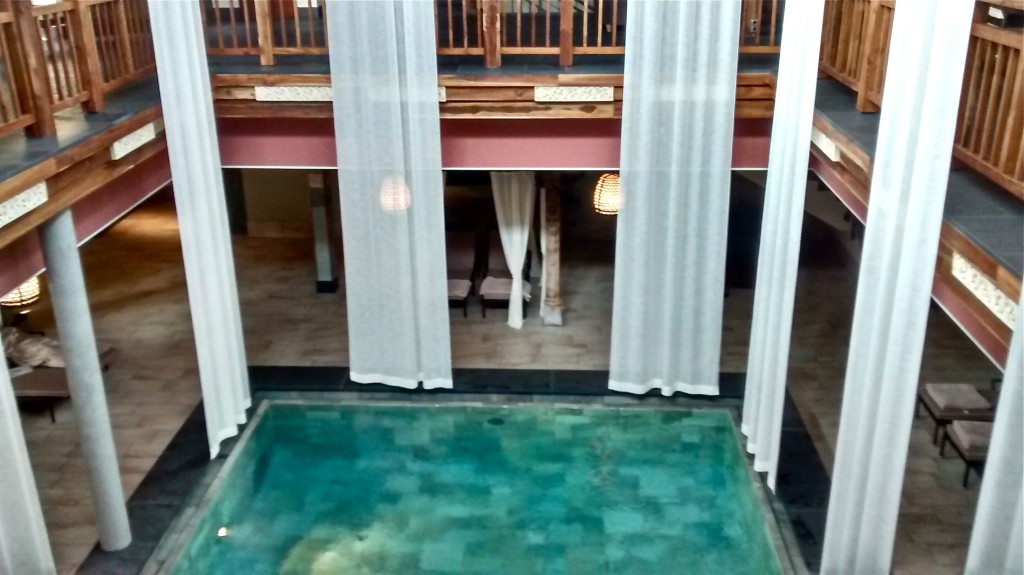The Anthropology of Vabali
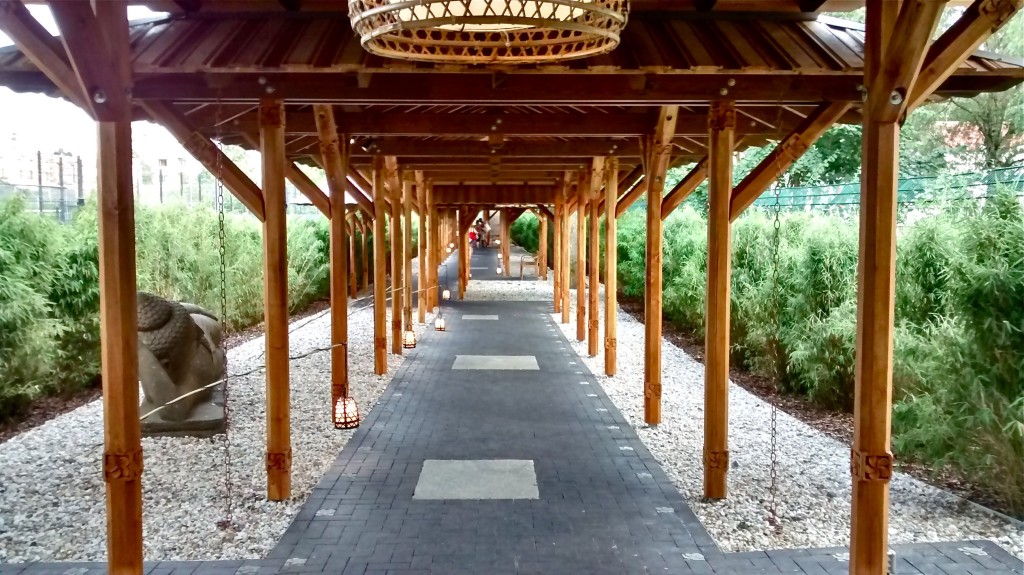
Was I the only one surprised that only a five minute walk from Berlin’s Central Station there is a brand new upscale Balinese spa and garden, called Vabali, that covers a surface area of 20 000 square metres? Or that, quite different from a traditional space in Bali, it’s a giant nudist colony?
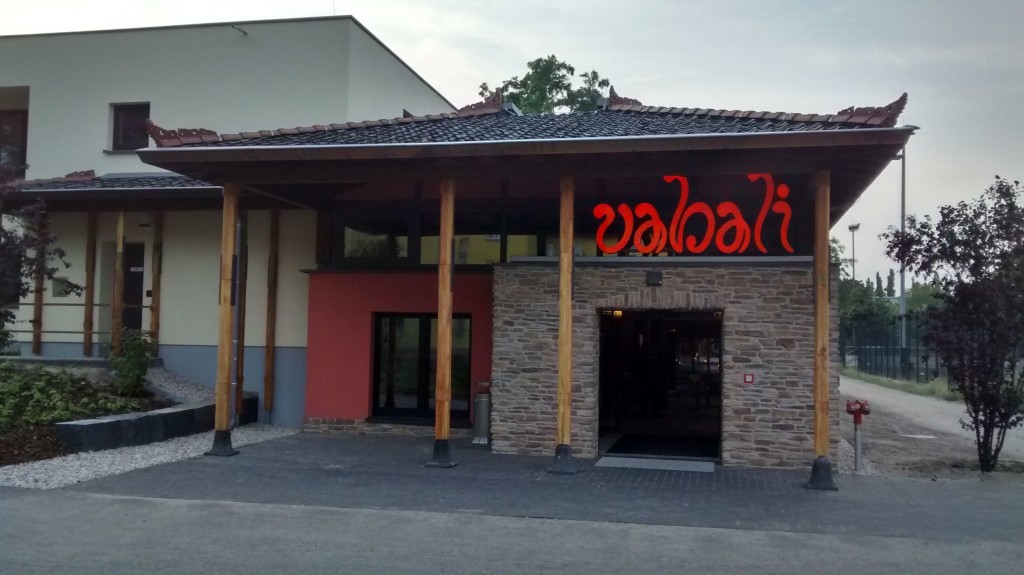
I must admit that, when I read the article in the Berliner Zeitung last month, about this massive installation––the largest spa in Germany, one of a kind in Berlin, opened by the two brothers from Cologne who started the Liquidrom–– I expected the worst. I didn’t like that these guys ‘had dreamed up the fantasy name’, or that the teak wood came from houses that had been demolished in Bali, carried over at great expense in 30 freight containers from the South Pacific. And I was dubious about how this megalomaniacal project costing 20 million Euros could possibly deliver a profit in a city that continues to be a little more arm than it is sexy. But when so much is at stake, you can’t help but really really want to take a look.
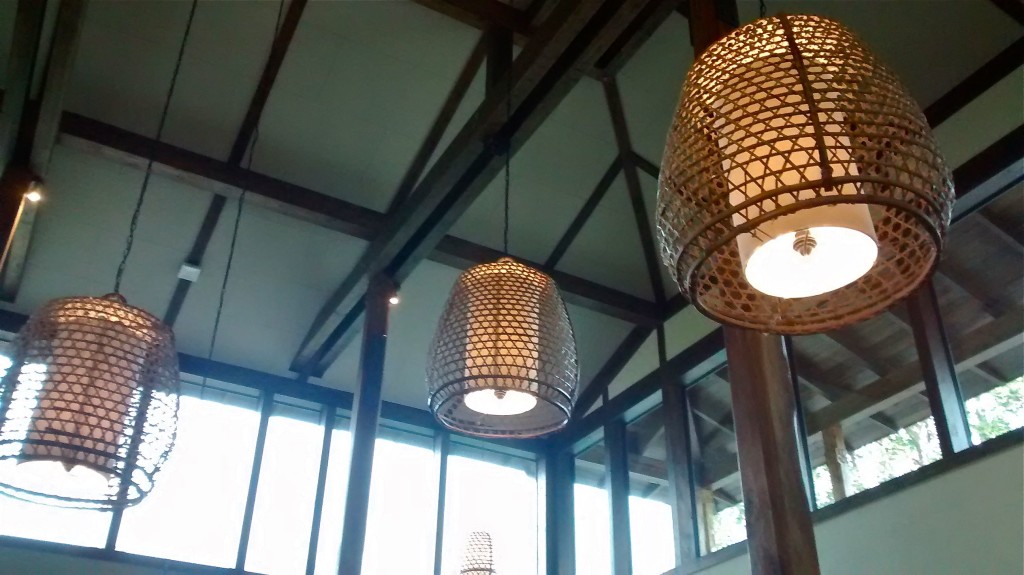
My fears seemed confirmed the moment I approached the large car park and the main entrance adorned by an oversized orange sign, that reminds one too strikingly of a visit to Obi. The doors slid open and I was confronted by a space that seemed a hybrid between a posh hotel and the entrance to the U-Bahn, with columns in oriental wood, lamps hanging in baskets, and a turnstile. Gulp.
Vabali is strangely inexpensive compared to other luxury spas. You can get two hours here for 18,50, and you don’t need to decide how long you stay when you arrive. The women in soft fabrics with their hair slicked back at the entrance will calculate whether you’ve spent a full-day (maximum cost on weekdays 28,50) when you leave. I am relieved that I can step in, review the expected Orientalist abomination, and get out at minimum cost.
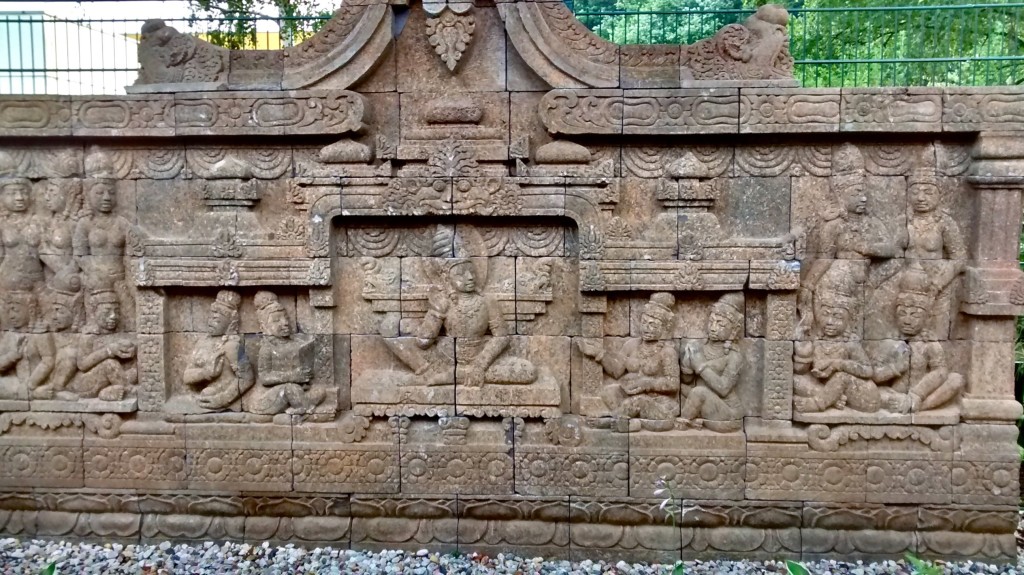
Another set of sliding doors opens before me, and I admit I am a little surprised, because before me is an elegant walkway, under a low roof, surrounded by bamboo on both sides, that runs for a remarkable 100 meters, varying its course at intervals to create illusions of distance. Along it are stone sculptures I suspect should be in a museum. I was in Bali a couple of years ago, and I was suddenly reminded of the narrow walkways between the houses in Ubud––or rather, the slicked-up version of it you’d find in a luxury hotel there like the Uma.
At the end are the vestiaires which, predictably, are mixed (I should confess that the easy nudity was an attraction and not a demerit when I anticipated my visit). The changing space is vast but the reception has given everyone lockers located one next to the other, so you have to squeeze. It’s a little ridiculous, but people seem already relaxed by their walk through the bamboo, and take it in stride.
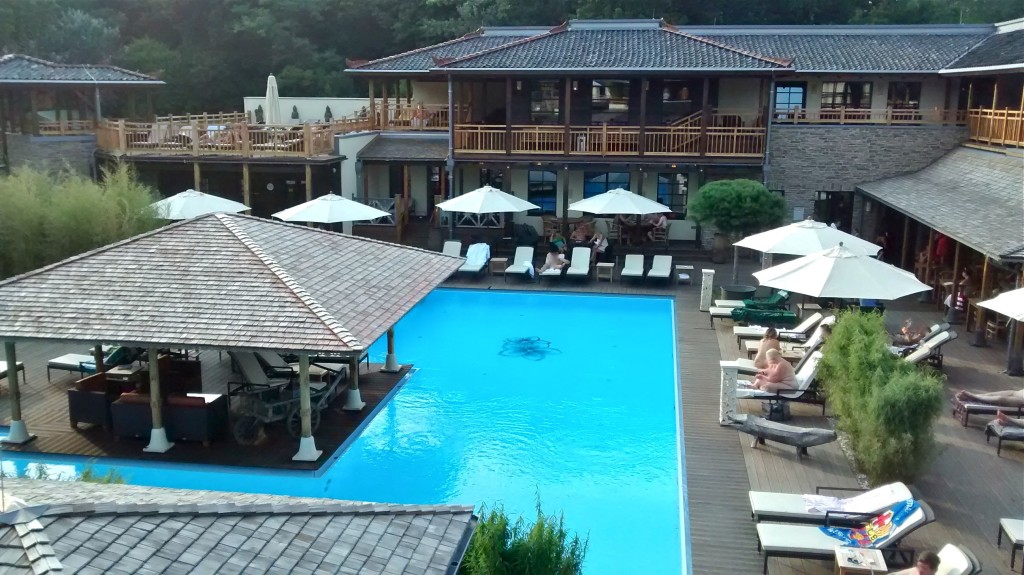
When finally, wrapped only in a towel, I come into the main area, I am a little perplexed. There is no main area. Or rather there are many many main areas and I don’t know where to start or where to position myself. You want to walk the whole area simply to get a grasp.
I am disoriented in ways not just spatial. My expectation that the whole place should be some Disneyland simulacra of a Balinese village (what did I expect? Plastic doors, roofs, and linoleum?) is turned on its head. The place is immaculate, full of high-end material, no expense spared. It is adorned with intricate carved doors, pillars decorated with the frangipani blossoms, roofs with woven fibres and jutting peaks. I start thinking about the anthropology of the place–– the difference between Japonisme and the Japan pavillion at Epcot as cultural appropriations. And I begin to admit to myself that this place falls into the former category––equally unable to escape the accusation of Orientalising, but infinitely more elegant than the Epcot version.
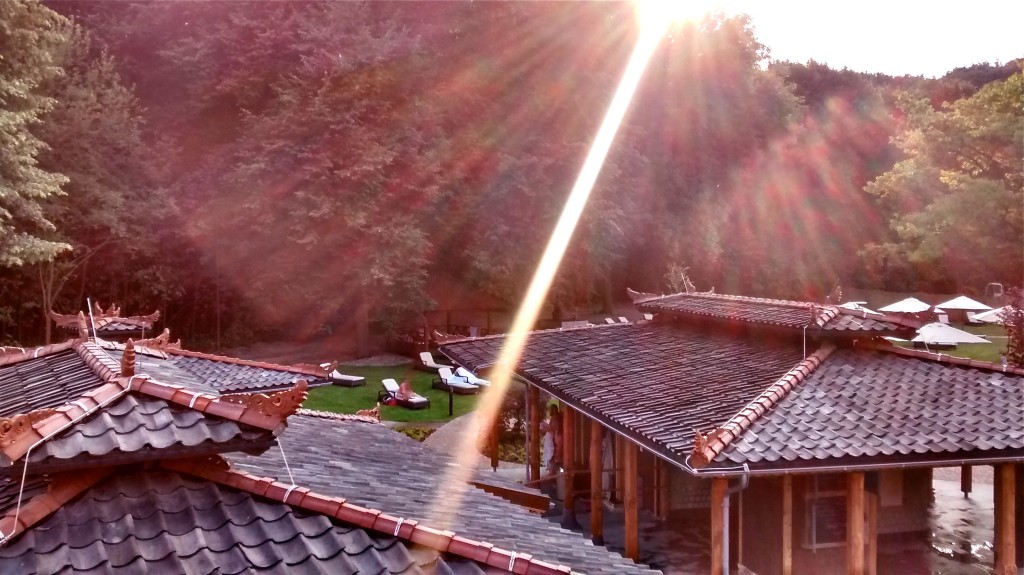
The garden looks onto the massive trees of the Fritz-Schloss-Park next door, which gives the entire ensemble a cadre that would normally require decades of plant growth. I walk onto the grass in my bare feet without my towel and there is no one else around except for a statue of a Buddha. I can’t quite believe I am in Berlin.
I notice that people are filing into the Russian banya, a little cottage in the park, to be steamed with birch branches. How perplexing and strange to be transported from Bali-Berlin to Belgorod-Berlin. It’s like one of those theme restaurants I read about in 1920s Potsdamer Platz where you can eat your way through the whole world. But why not? By the time I am done, I am thoroughly converted, and think it sure beats the lukewarm, and unfortunately unhygienic, experience I once had at a surburban installation in Western Ukraine.
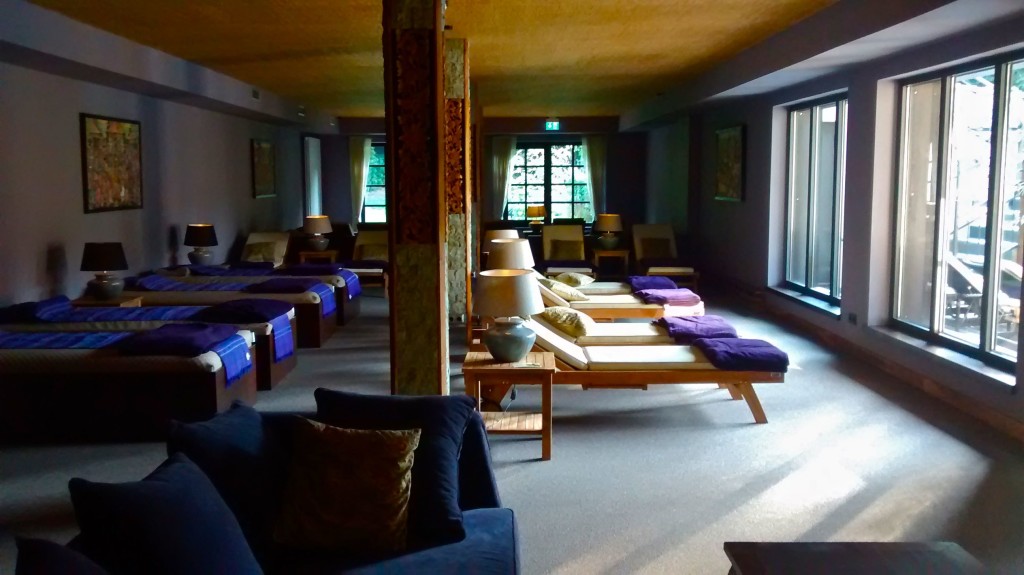
There are 11 different kinds of saunas, including two that can seat 70 people, and surprising Aufgüsse involving honey, camomile tea, ice, and 20-something student Bademeister doing their Ausbildung. There’s what an anthropologist friend called the ‘Cleopatra Pool’ inside, with its long sashes hanging from the ceiling. Outside, there’s a warm pool fringed with bamboo, and a large cold pool, where you can sit with your glass of white wine and your feet in the water. There’s a restaurant with dishes with Asian accents, and then there’s an enormous quantity of lawn recliners––I imagine to dispel that anxiety (often found in Germany, I must confess) to hog your place as soon as you arrive. And upstairs there are I think hundreds (I didn’t count) of places to sleep, mostly waterbeds covered with Indonesian fabrics. This is one of the strangest and most pleasant things about Vabali––the ability to retreat and lie down in a darkened room, perhaps with no one in it, as the entire place was incredibly empty.
I stay hour after hour, right up until closing at midnight, when the lanterns are lit in the garden and the stars come out. For a long time, I stay in one sauna with a roof of unfinished timbers and a large glass window to the garden and swaying branches. Finally, I retreat down the entrance way, the bamboo casting their night shadows, and feel that if I were a dog (a very very relaxed dog), my tail would be between my legs. All I know is that I have been somewhere I didn’t expect to go, and I suspect that that place might be Berlin after all.
